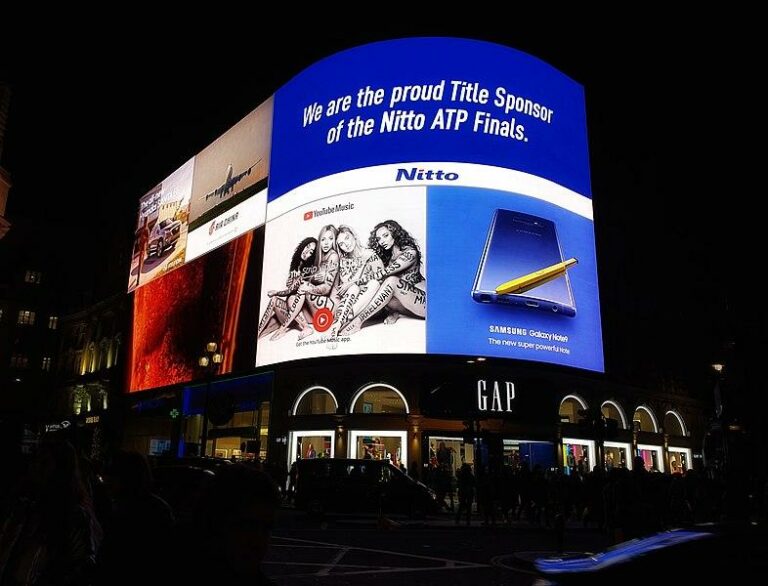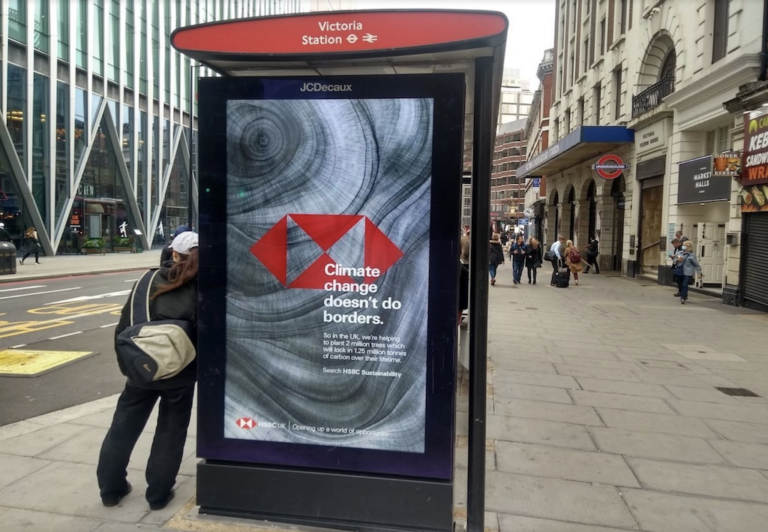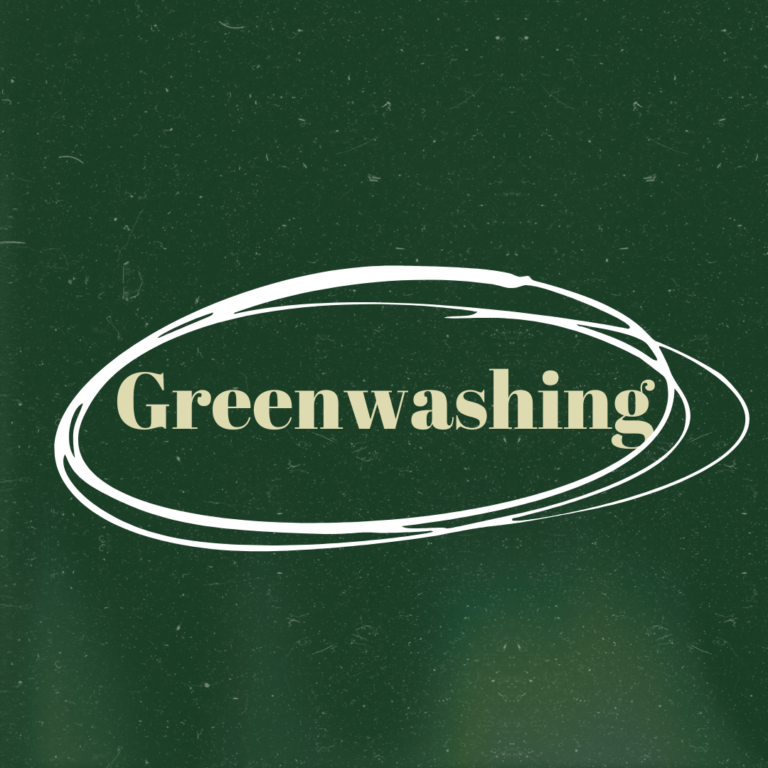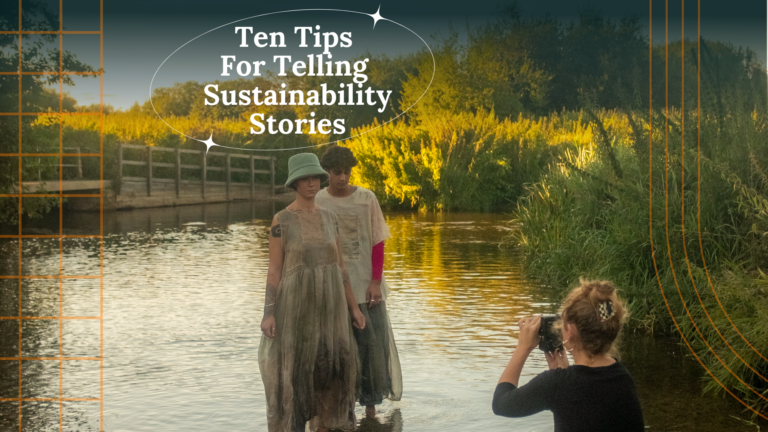Greenwashing occurs in many guises, from the use of misleading and ambiguous terms and making vague claims to using images of nature as a symbol of sustainability. In this blog we look at some of the different ways businesses greenwash.
Sin of no proof
If a company has no substantial evidence of their claims it is called the sin of no proof. This can be seen tracing back to 2007 when the ASA upheld a complaint about Shell, claiming in a advert:
“we use our waste CO2 to grow flowers and our waste sulphur to make super-strong concrete” (ASA 2014).

Shell could not present any evidence for all or most of the carbon dioxide output and sulphur that could be recycled in that way.
More examples of companies greenwashing can be in our blog here.
Sin of vagueness
Terms like “environmentally friendly, “sustainable” and “ethical” in advertising can be misleading and very ambiguous. The use of vague claims and ambiguous words can also be deemed as greenwashing and is referred to as the Sin of vagueness.
The ASA upheld a complaint regarding a rechargeable lawnmower, which stated in an advertisement “Mow your lawn the environmentally friendly way” (ASA 2014). The ASA concluded this claim was misleading as the firm was not able to provide sufficient evidence of the environmental damage of the full lifecycle of the product, considering the charging element and manufacturing process.(ASA 2014). Which therefore is considered greenwashing.
Not complying with certification standards
Certification from third parties can be seen as a step forward in eliminating greenwashing, however, the opposite can occur, if fraudulent labels exist and companies choose to use such labels.
The ISO 14001 which “specifies the requirements for an environmental management system that an organisation can use to enhance its environmental performance” (ISO 2015) aims to categorise companies’ sustainability efforts. However, the effects of the compliance and label are mixed.
A study from 80,000 facilities in Mexico from Blackman 2012 found that the ISO 14001 label and framework did not have any influence on compliance to certification standards. This is therefore, again, considered greenwash.
Scheme participation
Similar to certification misleading a company’s stakeholders, participation schemes can follow suit. Schemes have the aim of mutually agreeing on targets to help environmental performance, however, this is not always the case.
Firms who join programmes late have been found to not reduce their carbon footprint. For example, Kim and Lyon (2011) found that in the voluntary greenhouse gas registry scheme, firms did not reduce their emissions any faster than firms that did not participate in the scheme. Therefore it can be said voluntary and partnership programmes can be viewed as greenwashing if substantial changes are not made to a firm’s environmental performance.
Misleading visual representation
Academics, Bell, Warren and Schroeder (2014) argue that “visual” presentation is an integral part of all aspects of a firm’s strategy, operations and communication. The use of visual imagery is an integral part of a firm’s corporate strategy and is a key tool in sustainable communications. And, studies have found that luxury brands use nature as a symbol, to enable consumers to link their brands with sustainability.
This can be seen in the case of BP’s use of visual communication after the destruction and sinking of their “Deepwater Horizon” oil rig. The event was one of the largest environmental catastrophes the world has ever witnessed. In addition to the loss of human life, at least 200 million gallons of oil were released from the well into the Gulf of Mexico, resulting in the largest ever accidental release of oil into the marine environment (National Commission, 2011).
BP’s visual communication after this spill raised serious questions of the organisations greenwashing strategy. Kassinis and Panayiotou found that “careful construction and use of images on its corporate website, BP narrated a visual story that helped the company construct a ‘logic of representation’ when its ‘logic of practice’ became problematic and heavily scrutinised. This approach can been seen as misleading when the decoupling from reality was exposed.
A more recent example of the use of visual imagery in its messaging and corporate strategy was from Mercedes Benz. Using elements from nature which fed into the company’s logo, the Nature of Nothing campaign used imagery to highlight their new electric vehicle range.

Images from Mercedes Benz Nature of Nothing Campaign.
However, after a significant social media backlash, the company has decided not to run this campaign globally.
About Floom Creative
Floom Creative helps businesses to understand the bigger picture, identify and improve the impact their business has and implement strategies which create purposeful, ethical narratives that inspire action and tackle environmental degradation.
If you want to ensure that your business does not fall into the trap of unwittingly using one of the different types of greenwashing in your communications then complete our contact form, give us a call on 07590 848895 or drop us a line at hello@floomcreative.co.uk.
References
The Advertising and Standards Authority 2014. .Environmental claims: General “Green” claims. Available at https://www.asa.org.uk/news/supporting-ad-net-zero.html.
ISO 14001:2015. Environmental management systems — Requirements with guidance for use Available at: https://www.iso.org/standard/60857.html
Blackman, A., 2012. Does eco-certification boost regulatory compliance in developing countries? ISO 14001 in Mexico. Journal of Regulatory Economics, 42, pp.242-263.
Kim, E.H. and Lyon, T.P., 2011. Strategic environmental disclosure: Evidence from the DOE’s voluntary greenhouse gas registry. Journal of Environmental Economics and Management, 61(3), pp.311-326.
Bell, E., Warren, S., & Schroeder, J. (2014). Introduction: The Visual Organization. In E. Bell, S. Warren, & J. Schroeder (Eds.), The Routledge Companion to Visual Organization (pp. 1-16). London: Routledge.
National Commission. (2011). Final report on the BP Deepwater Horizon Oil Spill and Offshore Drilling, released 1/11/2011.
Other resources on Greenwashing we have:
5 ways individuals can stop companies from greenwashing
What is Greenwashing and how to spot it?
What Is The Green Claims Code And What Does It Mean For Your Business?
Check out our Blog HERE
Follow us on socials:




















